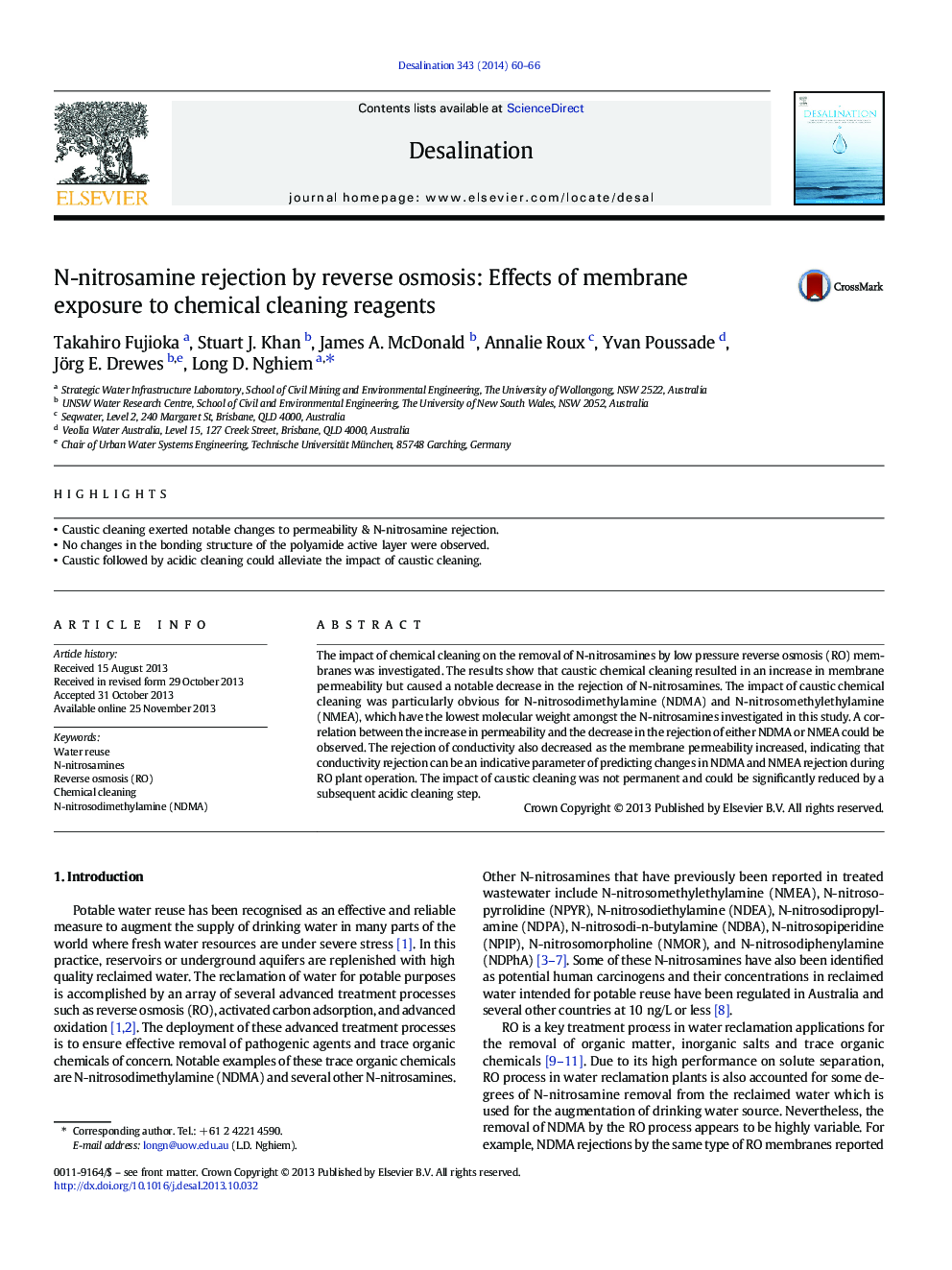| کد مقاله | کد نشریه | سال انتشار | مقاله انگلیسی | نسخه تمام متن |
|---|---|---|---|---|
| 623545 | 1455352 | 2014 | 7 صفحه PDF | دانلود رایگان |

• Caustic cleaning exerted notable changes to permeability & N-nitrosamine rejection.
• No changes in the bonding structure of the polyamide active layer were observed.
• Caustic followed by acidic cleaning could alleviate the impact of caustic cleaning.
The impact of chemical cleaning on the removal of N-nitrosamines by low pressure reverse osmosis (RO) membranes was investigated. The results show that caustic chemical cleaning resulted in an increase in membrane permeability but caused a notable decrease in the rejection of N-nitrosamines. The impact of caustic chemical cleaning was particularly obvious for N-nitrosodimethylamine (NDMA) and N-nitrosomethylethylamine (NMEA), which have the lowest molecular weight amongst the N-nitrosamines investigated in this study. A correlation between the increase in permeability and the decrease in the rejection of either NDMA or NMEA could be observed. The rejection of conductivity also decreased as the membrane permeability increased, indicating that conductivity rejection can be an indicative parameter of predicting changes in NDMA and NMEA rejection during RO plant operation. The impact of caustic cleaning was not permanent and could be significantly reduced by a subsequent acidic cleaning step.
Journal: Desalination - Volume 343, 16 June 2014, Pages 60–66